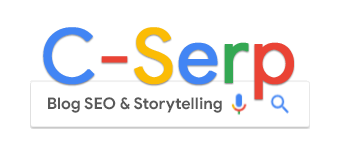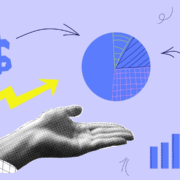PPC budget planning: Aligning business goals, ad spend and performance

Budget planning is one of the most critical and complex parts of running effective PPC campaigns.
It’s not just about allocating dollars; it’s about aligning spend with business goals, market dynamics, and performance insights, while staying flexible enough to adapt as things change.
This guide explains how to build a sustainable, data-driven budget that evolves throughout the year and balances top-down targets with bottom-up realities.
Set your budget for the long run
The best budget plans start with a yearly view. Why?
Because seasonality, product launches, and business goals don’t happen in isolation, or on a month-by-month basis.
Budgeting is a complex exercise, and repeating it every month is too time-consuming.
Instead, you want to capture the big picture:
- Seasonality.
- Launches.
- Fiscal cycles.
- And more.
An annual plan helps you anticipate:
- High- and low-investment periods.
- Seasonal events like Black Friday or Christmas.
- Fiscal-year timing.
- Potential cash flow constraints.
For example, if your budget unlocks gradually and you expect bottlenecks in June or September, plan for them now.
That foresight prevents last-minute scrambles and allows for smooth mid-year adjustments.
Compare top-down and bottom-up approaches
Most budget plans start with one or a mix of these two approaches:
- Top-down: Senior management sets high-level targets, like “40% of revenue must come from paid search. Here’s $1 million to make it happen.”
- Bottom-up: As the PPC specialist, you analyze performance data, KPIs, and constraints to assess what’s actually achievable.
Bottom-up planning is often more grounded.
A common pitfall?
Leadership asking to boost paid search spend when impression share is already near 100%, making it unrealistic to expect meaningful volume gains just by spending more.
Still, top-down guidance is valuable. It defines the total budget and strategic direction, which can push you to explore creative growth levers.
Whichever path you follow, bottom-up planning should begin with the business goal – usually a target conversion volume tied to CPA, revenue, or ROAS.
Profit data, if available, is even better.
Dig deeper: PPC budgeting in 2025: When to adjust, scale, and optimize with data
Use historical and external data to allocate budget
Once you’ve set your business goal and total budget, use micro KPIs – like conversion rate, CPC, and impression share – to project what your budget can realistically achieve.
This helps you prioritize high-performing campaigns and cut underperformers.
- Start by analyzing the last 30 days to spot immediate trends: For example, search impression share can quickly reveal whether there’s room to scale specific campaigns.
- Compare each month or quarter to the same period in past years to uncover seasonality and smooth out anomalies: If last year’s data shows weak results, consider whether it was an outlier, and exclude pandemic-era data when needed.
- Use tools like Google Ads’ Keyword Planner, Performance Planner, and Reach Planner to anticipate shifts in demand: This helps you detect changes in competitiveness and market dynamics early. A sudden drop in conversion rates or available impressions might mean your assumptions – or your strategy – need adjusting.
- Validate your internal model against external benchmarks: Impression share can show if there’s growth potential or if you’re already saturated, while industry data provides context on market size, performance norms, and expected efficiency.
Segment budgets based on goals and performance forecast
Once you’ve set your macro budget, segment it by funnel stage and other key dimensions.
Bottom of funnel: Branded search
- This is your defensive budget to protect brand share of voice. Don’t overspend here. Your goal is to minimize cost while preserving revenue.
Mid-funnel: Retargeting
- Like branded campaigns, this stage rarely brings in new customers. Ideally, you’ve run incrementality tests to identify the optimal spend and trim overlapping channels.
Top of funnel: Prospecting/acquisition
- This is where most of your budget should go to drive new customer growth. Allocate based on different goals than lower-funnel campaigns.
Experiments
- Set aside 5–15% of your budget for testing new channels or formats, like YouTube ads. This prevents overreliance on a narrow set of campaigns.
Drill down by key dimensions
- Use 12–36 months of historical performance to segment further by device, day of week, geography, audience, and more. For instance, if desktop users convert better, allocate accordingly and test the ideal split.
Dig deeper: Setting PPC goals: How to tailor KPIs and metrics for each funnel stage
Set up a monitoring system and review budget frequently
Finalizing your budget plan is just the beginning. Budgets aren’t static, and keeping them on track often requires near real-time monitoring.
Use tools like Excel or Looker Studio to build simple pacing dashboards with at least two essentials:
- Spend drop alerts: These often signal payment or technical issues stopping campaigns. You want to catch and fix them fast.
- End-of-month spend forecast vs. budget: Review this regularly (at least weekly) to prevent overspending. Projecting spend based on recent trends – like the last 7 days – helps avoid surprises and keeps pacing in check.
Beyond monitoring, review your budget monthly or quarterly to:
- Evaluate experiments and adjust spend.
- Reallocate budget across channels or funnel stages.
- React to product launches, market shifts, or changing business needs.
Avoid major course corrections unless necessary.
Frequent overhauls usually signal a misaligned initial plan. If that’s the case, document what went wrong to improve your next cycle.
Also, build flexible approval processes that let you scale spend quickly during peak performance windows or slow it down when returns dip.
Report on budget based on your target audience
Budget reporting isn’t one-size-fits-all. Different stakeholders need different levels of detail and focus.
Leadership reports
Senior leaders typically want a concise, high-level view. Don’t overwhelm them. Focus on:
- Budget pacing vs. total spend.
- Macro KPIs like revenue, CAC, ROAS, and profit.
- Whether there’s room to accelerate spend, or signs you’re hitting saturation.
Operational reports
These are built for diagnostics and daily decision-making.
They should equip you to answer questions like, “Can’t you just spend more on campaign XYZ? It’s our top performer.”
Include:
- Deeper segmentation: By network, channel, campaign, etc.
- Multiple timeframes: Daily, weekly, monthly.
- Funnel metrics: Every step from homepage to order confirmation.
- Cost metrics: CPM, CPC, CPA.
- Efficiency metrics: ROAS, AOV, and others.
Dig deeper: How to manage a paid media budget: Allocation, risk and scaling
Adapt budget to business realities
Budget optimization should follow business common sense. If a campaign’s CPA makes profitability impossible, reduce the budget. It’s that simple.
Define clear performance thresholds to flag underperforming campaigns early, and set rules for when to scale spend up or down.
For lead gen, remember that CPL doesn’t always correlate with ROI. If the cost per lead is too high relative to your average lead-to-sale rate, the campaign likely needs a smaller budget.
Also, consider team capacity. If a campaign drives more leads than your sales team can handle, it’s smarter to reallocate budget to avoid waste.
The same applies in ecommerce. During peak periods like Black Friday, if inventory is limited, stretch the budget across a longer time window or save it to accelerate once stock is replenished.
Improve with a repeatable budget system
Budget planning is complex and time-consuming the first time, but it doesn’t have to stay that way.
Use your first iteration to map out the full process, then work toward automating as much as possible:
- Data sources, pipelines, and transformation.
- Manual inputs.
- Alert systems.
A systematic, repeatable process saves time, reduces errors, and improves decisions over time.
You may find you need to better balance top-down goals with bottom-up realities, or be more disciplined in execution. Either way, build that learning into your next cycle.
By embedding data-driven decision-making, clear segmentation, real-time monitoring, and automation into your workflow, you’ll set your campaigns up for stronger, more sustainable ROI – no matter how the market shifts.


